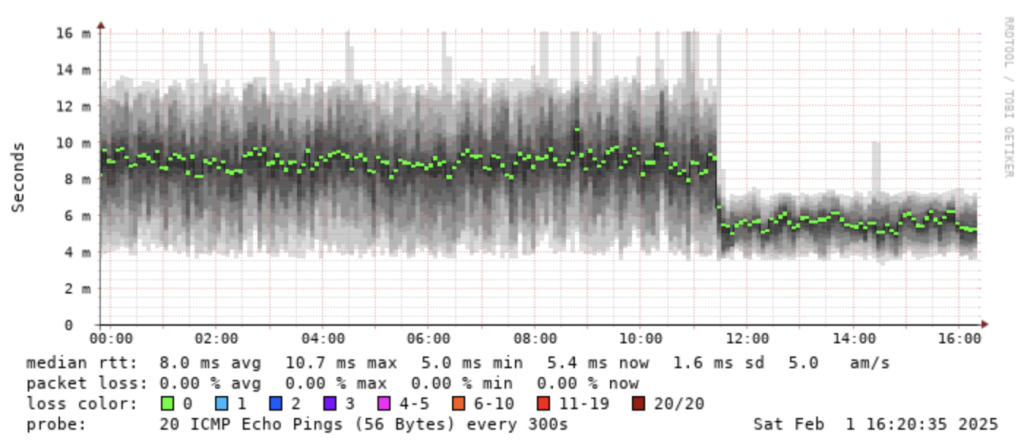My parents and I are both lucky to be in a Verizon Fios service area and get FTTH Internet, which is generally far superior to DOCSIS or xDSL when it comes to speed but also, more importantly, latency and jitter. My parents have had the service for about two decades and I’ve had mine since 2021, when I moved to VA and I started with the Gigabit (940/880 Mbps, actually) speed tier. My parents, however, have stuck with the 75/75 Mbps since they really haven’t felt the need for more bandwidth.
I was visiting them this weekend and along with installing a new Mac mini M4 for my mom as a late Christmas present, also helped them install their new Fios TV+ to replace their old (and I guess soon unsupported?) set top boxes. The Fios TV+ service makes use of Google Stream TV hardware & software on each TV, which all connect to a main Video Media Server through a combination of MoCA and Wi-Fi. The VMS receives ATSC through coax from the ONT. Anyway, this generally requires a Verizon-branded router if all it ends up doing is bridging MoCA and Wi-Fi. As I do in my home, I put the router behind my own router since I use home-grown Debian-based routers running various VPNs and iptables (see PCN for more details). Regardless, I replaced their ancient Actiontec MoCA router with the new G3100. The installation was pretty easy and now my parents have two Wi-Fi networks in their home: the main one and one dedicated for the Stream TV boxes.
When we activated the first Stream TV box and the VMS, their Internet service was automatically upgraded to the 940/880 Mbps service without a price difference (no ONT reboot required). I am not completely clear on what happened on the billing side of things but my dad seemed happy.
Various standard speed tests confirmed the new bandwidth tier was working as expected. I then looked at SmokePing just for kicks, not expecting to see anything different but got a surprise:

All SmokePing targets saw the latency and jitter drop.
This was unexpected for two reasons:
The link speed on my router was 1000Mbps/full-duplex before and after the upgrade. Although, even if it was 100Mbps/full-duplex before, that would not explain the drastic latency decrease of ~9 ms to ~5 ms since a 56-byte ICMP packet incurs 4.48 μs deserialization delay at 100 Mbps and 0.448 μs at 1000 Mbps. That’s not anywhere near the milisecond range.
From what I have seen, bandwidth tiers on residential Internet services are implemented as policers (token bucket) or shapers (leaky bucket), neither of which kick in until the traffic hits the limit, which was 75 Mbps symmetric before and 940/880 Mbps after. There certainly wan’t much of anything even close to 75 Mbps between 1000 and 1200 local time (graph is cut off at 10 Mbps to highlight this):

So, link speed was always 1000Mbps and we weren’t hitting the limiters prior to the bandwidth upgrade. Why did the latency change?
None of the hardware between my SmokePing node and the Fios network changed during this upgrade and the software (and uptime of the operating systems) didn’t change. My only explanation is that Verizon may be using something other than normal policiers and shapers for their bandwidth tiers, which impacts unloaded latency numbers.
If this is all true and there’s no other explanation for the latency change, this indirectly creates latency as well as bandwidth tiers. Latency is especially important for realtime applications such as A/V and gaming as well as the time it takes for TCP to increase its sliding window. The last point can impact page load times when multiple short-lived TCP connections are used to pull various page components.
Am I the only one who’s seen this?